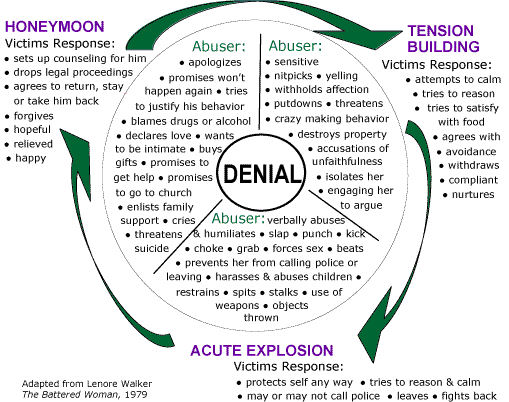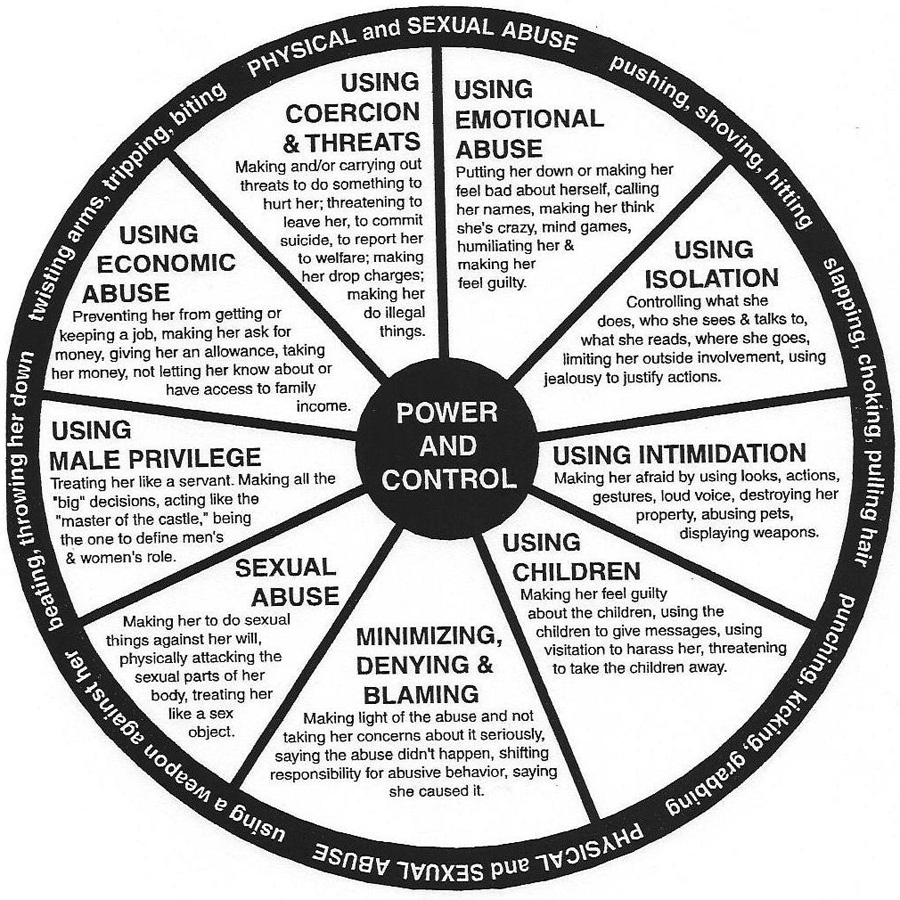Domestic Violence can follow a pattern known as the Cycle of Violence. This cycle of abuse consists of three phrases: the tension building phase, the acute battering incident and the affectionate, remorseful, loving honeymoon stage.
The longer this cycle continues without intervention, the more frequently the couple will cycle and the more severe the abuse will become.
The abuser exerts the Cycle of Violence and Power and Control to prevent domestic violence victims from leaving.

Stage 1 Tension Building
Domestic violence victims in this stage often describe feelings as if they are walking on eggshells when describing the building tension and anxiety. There is a level of uncertainly as to what behavior to expect from their abuser. This tension is experienced by all members of the household. Victims often believe they can still diffuse or calm their partner by using techniques that have been successful in the past. When these coping techniques fail, the tension becomes unbearable and the moves into Stage 2.
Stage 2 Acute Explosion
All of the built up tension in Stage 1 escalates into an explosion. The assault may be verbal and humiliating, attacking the victim’s self-esteem and self-worth or it may be physical. The police may or may not be called.
Stage 3 Honeymoon
This is the hopeful stage for the victim also described as being the honeymoon stage due to the behavior by both parties. Following Stage 2, the abuser often will exhibit loving and attentive behavior towards the victim in hopes of forgiveness. The abuser may even try to justify his abusive behavior towards the victim in hopes of forgiveness. The abuser may even try to justify his abusive behavior by blaming the victim for the abuse. It is common for the victim to falsely believe the abuse is her fault as well. The abuser’s promise to change often encourage the victim to have hope and to stay in the relationship as the victim mostly wants the abuse to end, not necessarily the relationship entirely. Denial of abuse and minimizing of abuser’s behavior is common in both people. Without education on domestic abuse and support, the victim may find it difficult to free herself from the abuse.


